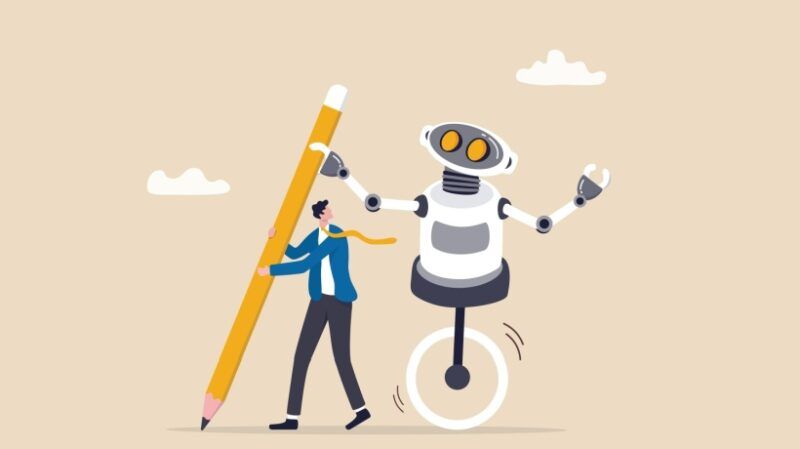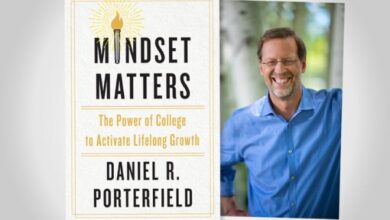AI Automation And Human Expertise In L&D: How To Balance Premium Scholorships Info

Enhancing Learning Through AI-Human Collaboration
Integrating Artificial Intelligence (AI) into Learning and Development (L&D) can significantly enhance efficiency and effectiveness. However, achieving the optimal balance between AI automation and human expertise is crucial to maximize benefits and maintain the quality and relevance of learning experiences. This article explores how organizations can blend AI capabilities with human skills to create impactful and ethical learning solutions.
Blending AI Automation With Human Expertise
First, it is essential to recognize the distinct roles that AI and human expertise play in L&D. AI excels at automating repetitive tasks, analyzing large datasets, and providing personalized recommendations. These capabilities allow human experts to focus on strategic and creative tasks that require critical thinking and emotional intelligence. For instance, AI can handle tasks such as grading assessments, tracking learner progress, and generating reports, allowing Instructional Designers to concentrate on content creation, learner engagement, and program evaluation.
Key Areas Where AI Can Help Human Educators
One of the key areas where AI can significantly enhance L&D is in content creation. AI tools can generate high-quality educational content, draft course materials, and create interactive scenarios. These tools can produce content quickly and consistently, ensuring that it aligns with the learning objectives. However, human expertise is essential to review and refine AI-generated content to ensure accuracy, relevance, and pedagogical soundness. Instructional Designers bring context, nuance, and creativity to the content, making it more engaging and effective for learners.
Similarly, AI can automate the assessment process by generating and grading tests, quizzes, and assignments. There are tools that use AI algorithms to evaluate student responses and provide instant feedback. This not only reduces the grading burden on educators but also ensures timely and consistent feedback for learners. However, human oversight is crucial to interpreting assessment results, providing personalized feedback, and addressing any issues or anomalies identified by AI. Educators can offer deeper insights, support learners’ emotional needs, and adapt teaching strategies based on assessment outcomes.
Personalization is another area where AI and human expertise can work together effectively. AI-driven platforms can analyze learner data to deliver personalized content recommendations, adaptive learning paths, and customized feedback. These platforms use Machine Learning algorithms to understand individual learner preferences, behavior, and progress, ensuring that the learning experience is tailored to their needs. However, human experts play a vital role in setting the parameters for personalization, interpreting AI-driven insights, and making informed decisions about content and delivery methods. They ensure that the personalization aligns with the organization’s learning goals and addresses the diverse needs of learners.
Ethical Considerations
Balancing AI automation with human expertise also involves addressing ethical considerations. AI systems can introduce biases if not properly managed, leading to unfair or discriminatory outcomes. Implementing strategies to identify and mitigate biases in AI algorithms is essential. Human oversight is crucial to ensure that AI-driven decisions are fair, inclusive, and aligned with ethical standards. Additionally, data privacy is a significant concern when using AI in L&D. Organizations must adhere to data privacy regulations such as GDPR and implement robust data protection measures to secure learner information. Transparent communication with learners about how their data is used and the role of AI in their learning journey is essential to build trust and acceptance.
Best Practices For Balancing AI Automation And Human Expertise
To effectively balance AI and human expertise, organizations should follow several best practices. First, clearly define the roles and responsibilities of AI and human experts in the L&D process. Establish guidelines for when and how AI should be used and ensure that human oversight is incorporated at critical points. Second, provide training for L&D professionals on how to use AI tools effectively. This includes understanding the capabilities and limitations of AI, interpreting AI-generated insights, and integrating AI with human-driven processes. Continuous learning and development are crucial to staying up-to-date with the latest AI trends and technologies.
Third, start with pilot projects to test AI applications and gather feedback. Small-scale pilot projects allow organizations to measure AI’s impact, identify areas for improvement, and make necessary adjustments before scaling up. Based on the success of pilot projects, gradually expand AI implementation across the organization, ensuring that each phase aligns with the strategic road map.
Fourth, continuously monitor and optimize AI-driven processes. Establish Key Performance Indicators (KPIs) to measure the effectiveness of AI in achieving learning goals, such as improved learner engagement, increased retention rates, and enhanced performance. Create mechanisms for continuous feedback from learners and stakeholders, and use this feedback to refine and improve AI applications. Regularly review and update your AI strategy to ensure it remains aligned with evolving business objectives and technological advancements.
Fostering a culture of innovation is also essential for successful AI integration. Encourage experimentation with AI tools and promote a culture where innovation is valued. Allow teams to explore new ways to integrate AI into learning and recognize and reward successful AI-driven initiatives. Highlighting case studies and success stories can inspire wider adoption across the organization and promote a culture of continuous improvement.
Conclusion
In conclusion, balancing AI automation with human expertise in Learning and Development requires a strategic and thoughtful approach. By recognizing the complementary roles of AI and human experts, addressing ethical considerations, and following best practices for AI integration, organizations can create effective, engaging, and ethical learning experiences. Embracing the power of AI while maintaining the human touch ensures that L&D initiatives are impactful, relevant, and aligned with business goals. This balanced approach positions organizations for long-term success in an increasingly digital and AI-driven world.





